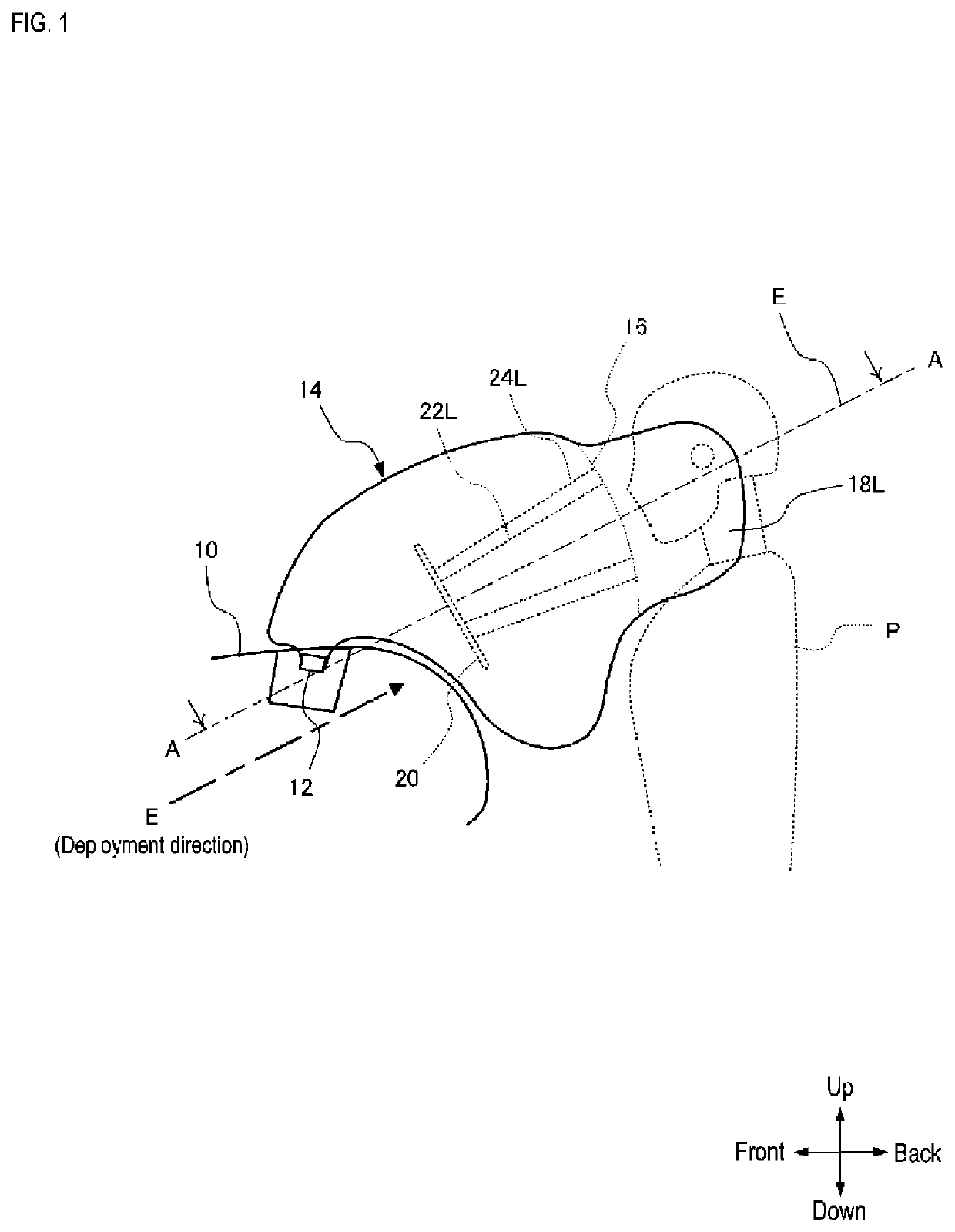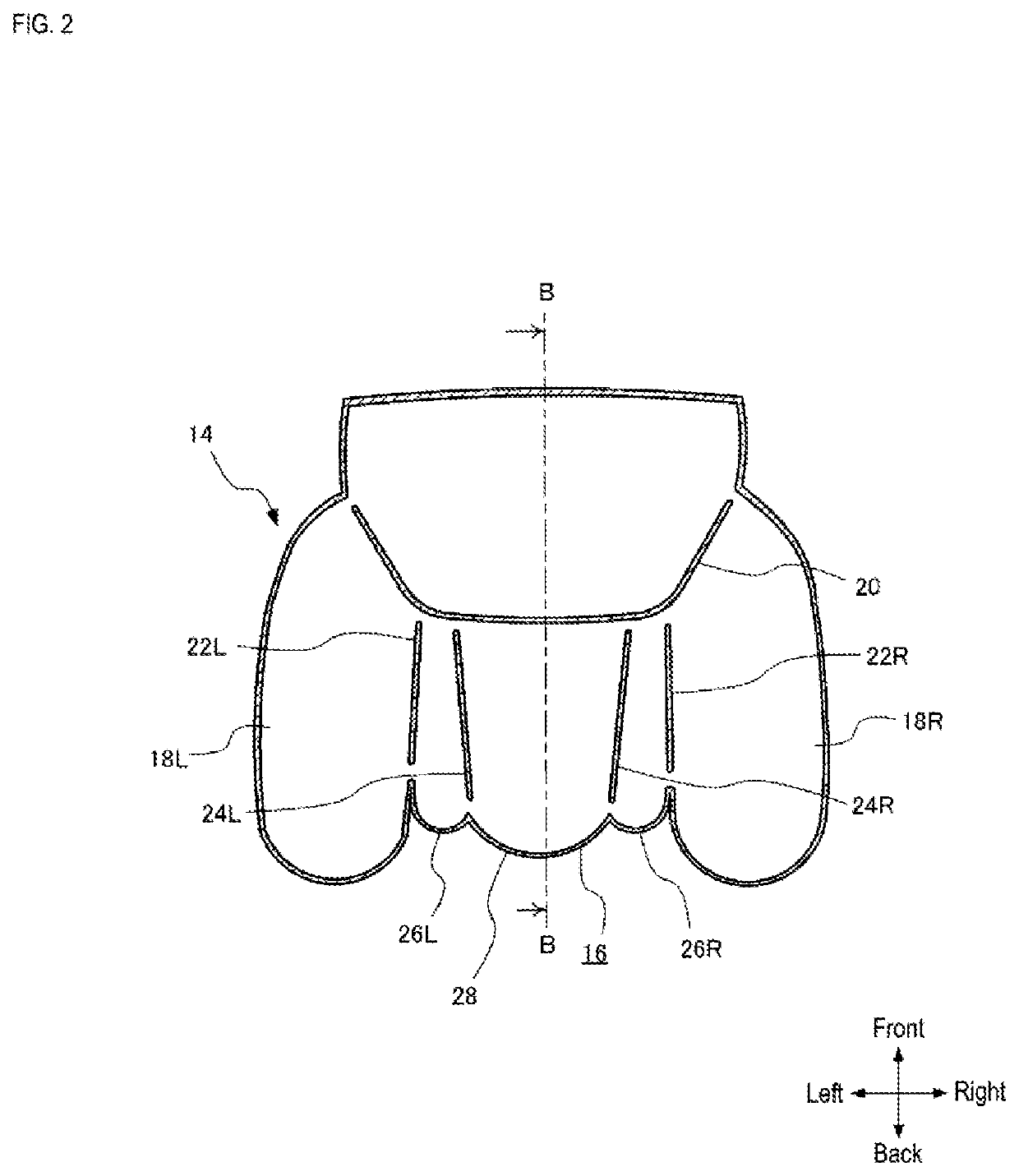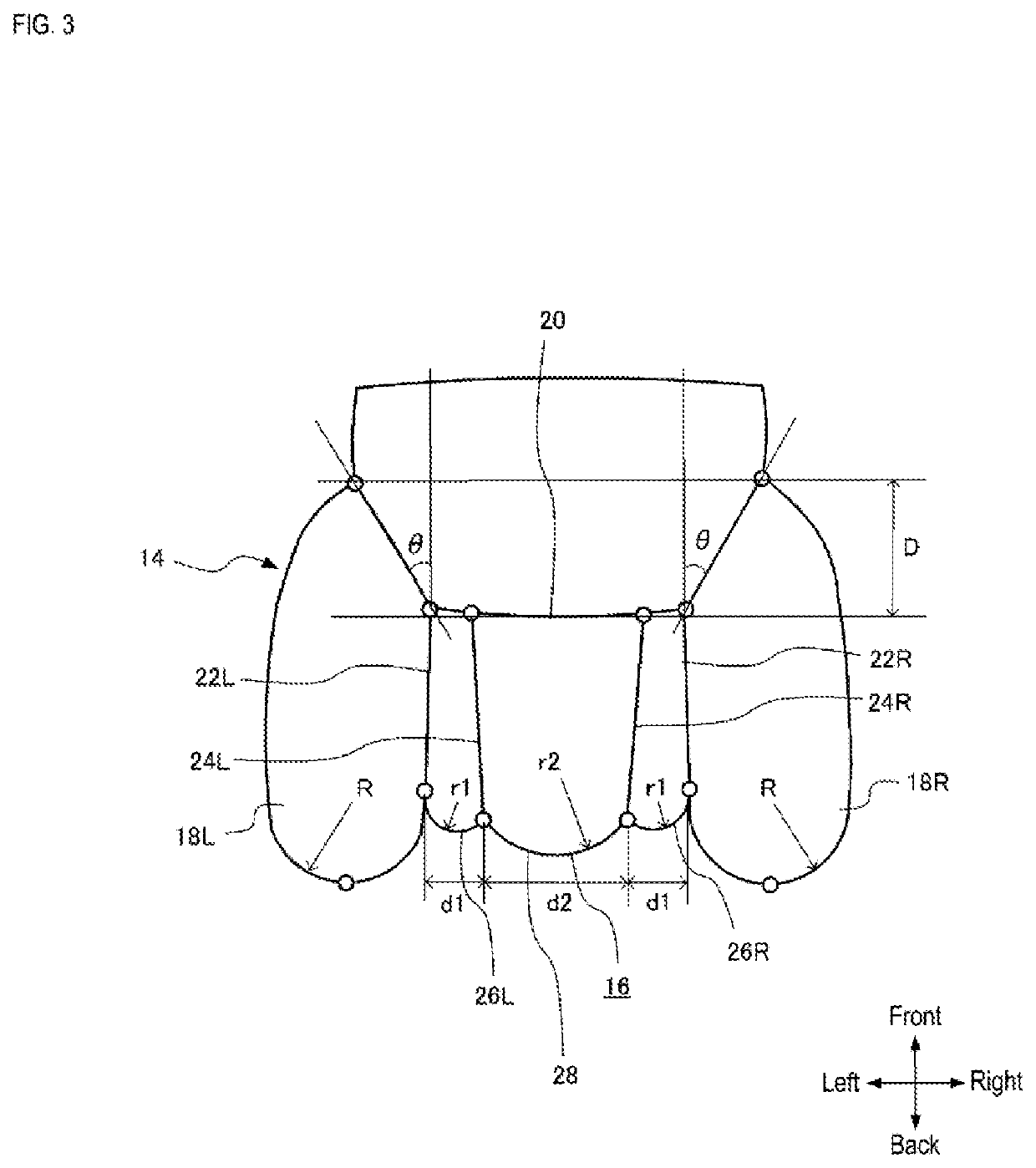Airbag device
a technology for airbags and head guards, which is applied in the direction of pedestrian/occupant safety arrangements, vehicular safety arrangments, vehicle components, etc., can solve the problems of not being able to prevent the head of an occupant from turning sufficiently, and achieve the effect of preventing the head turning
- Summary
- Abstract
- Description
- Claims
- Application Information
AI Technical Summary
Benefits of technology
Problems solved by technology
Method used
Image
Examples
Embodiment Construction
[0036]Occupant airbag devices according to examples of the present invention are described in detail below based on the accompanying drawings. Note that in the examples, while an occupant P is based on an experimental dummy, the same functions will be achieved with an actual occupant.
[0037]FIG. 1 is a side view illustrating the deployed state of an airbag 14 of an occupant airbag device according to examples of the present invention. FIG. 2 is a schematic view corresponding to the cross section along A-A line in FIG. 1 and illustrating a configuration of tethers constituting the airbag 14, wherein the tethers are illustrated spaced at their connections in order to clearly distinguish each member. FIG. 3 is a schematic view corresponding to the cross section along line A-A in FIG. 1 similarly to FIG. 2 and illustrating the size, shape, locations of connections, and the like of panels and the tethers that constitute the airbag 14. In FIG. 3, white circles indicate stitching locations ...
PUM
 Login to View More
Login to View More Abstract
Description
Claims
Application Information
 Login to View More
Login to View More - R&D
- Intellectual Property
- Life Sciences
- Materials
- Tech Scout
- Unparalleled Data Quality
- Higher Quality Content
- 60% Fewer Hallucinations
Browse by: Latest US Patents, China's latest patents, Technical Efficacy Thesaurus, Application Domain, Technology Topic, Popular Technical Reports.
© 2025 PatSnap. All rights reserved.Legal|Privacy policy|Modern Slavery Act Transparency Statement|Sitemap|About US| Contact US: help@patsnap.com



